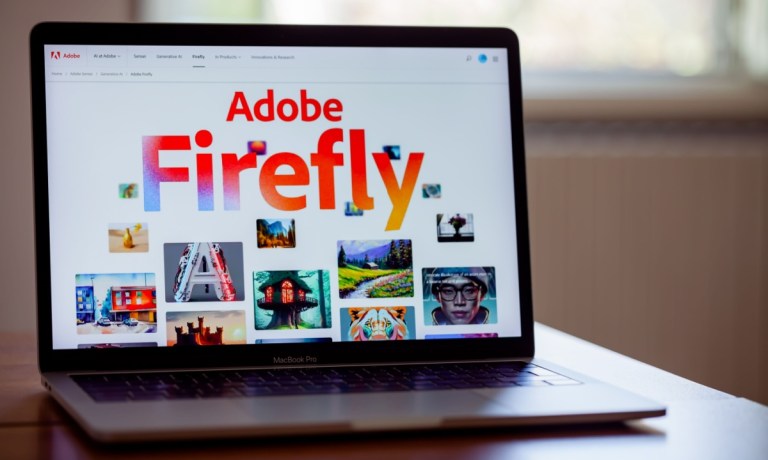Adobe AI Video Tools and Others Aim at Streamlining Corporate Media Content Creation

Artificial intelligence (AI) video tools, including Adobe’s latest release, are transforming corporate media by enabling rapid, low-cost custom content creation.
The Firefly Video Model, part of Adobe’s Creative Cloud suite, leverages licensed footage and AI to enable rapid video production while navigating potential legal and ethical pitfalls. It joins a growing field of AI-powered video tools, competing with recent offerings from companies like Runway, Synthesia and DeepBrain AI.
“Tools like Firefly Video Model are going to shake up the video production world big time,” Christine M. Haas, CEO at Christine Haas Media, told PYMNTS. “This AI will automate much of the grunt work — editing, color correction, simple animations. But here’s the thing — AI is a tool, not a replacement.”
Streamlining the Creative Process
Adobe’s launch of a public beta of Firefly, an AI tool that generates videos from text prompts, expands the company’s suite of AI-powered creative tools. The model supports over 100 languages and is integrated into several Adobe applications, positioning it as a competitor to other AI video generation offerings from companies like OpenAI and Meta.
According to Michelle Berryman, executive creative director at Hero Digital, an Adobe solutions partner, this new technology offers real efficiency gains.
“When you think of a marketer sifting through b-roll or interstitials, it requires hours of searching for the perfect stock video from a library with a poor search experience,” she told PYMNTS. “But with AI, you can describe what you want to create, and then it’s generated. It’s so much more efficient.”
This streamlined process could reduce the time and resources required for video content creation. “It also allows the creative person to bring his or her vision to life much more accurately than using a library. Instead of finding assets that sort of fit their vision, this gives them a lot more control of the narrative and output,” Berryman said.
The tool’s impact extends beyond efficiency. Automating time-consuming tasks allows creative professionals to focus on higher-value aspects of content creation. “Like a design system, it doesn’t negate the need to be creative or think big, but it does eliminate the need to take your best talent and have them do small, uninteresting things like animate a button,” Berryman said.
Reshaping Marketing Budgets and Strategies
AI video tools are set to reshape marketing budgets and strategies across businesses. Berryman suggested it will “democratize video creation skills positively, which will help marketers reduce the cost of traditional campaigns.”
She said AI can automate time-consuming initial stages of creative development, allowing teams to “bring concepts to a higher level of fidelity faster, enabling them to refine or pivot ideas when needed.”
Not every business will use AI the same way. “Small businesses can now create professional-looking videos without breaking the bank,” Haas said. Medium-sized businesses? “They’ll probably use a hybrid approach — AI for quick, day-to-day content and professionals for high-stakes projects. Big enterprises will integrate AI tools into their existing workflows to boost efficiency, but don’t expect them to ditch their video teams entirely.”
Another advantage of this tool is its integration into Adobe’s existing products. “It’s a suite of tools that creatives are already using and trust. It provides copyright protection and creates assets in a walled garden, which allows marketers to feel good about using the software,” Berryman said.
The Competition
Adobe’s AI-powered video creation is not alone in this space. Runway, a startup, has gained attention for its text-to-video capabilities. Synthesia offers AI-powered video creation with virtual presenters, while DeepBrain AI specializes in creating digital humans for video content. Each of these competitors brings unique strengths to the market, but Adobe’s established user base and creative suite give it a strong position.
According to Haas, these tools’ potential lies in cost-cutting and reshaping business strategies. “The smart move isn’t just to use AI to cut costs. Imagine a company giving away a simplified version of Firefly for free. They hook users with this awesome free tool and then upsell them on advanced features, training, or complementary services. It’s the classic ‘Give away the razor, sell the blades’ strategy, but for the AI video age.”
This approach could lead to new business models in the creative software industry. As AI-powered tools become more prevalent, the differentiator may shift from the tools themselves to how companies use them to create value for their customers.
“The companies that figure out how to leverage AI tools like Firefly not just for cost-cutting, but as part of a larger strategy to attract and retain customers — those are the ones who will win big in this new landscape,” Haas said. “That’s how you stand out when everyone else is using AI and is making the same chess moves as everyone else.”
For all PYMNTS AI coverage, subscribe to the daily AI Newsletter.

